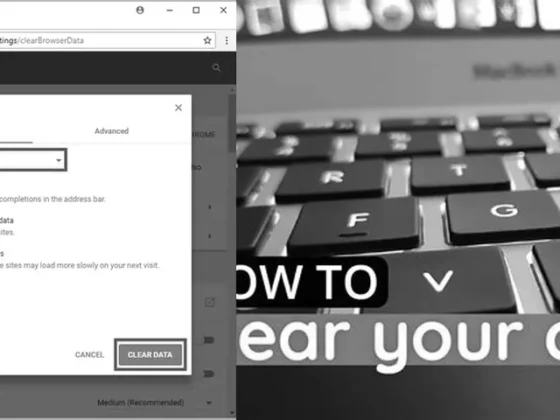How to Easily Add a Repository to Ubuntu Apt: Your Ultimate FAQ Guide – Are you tired of hunting down software packages for your Ubuntu system? Well, fret no more! In this blog post, we will unravel the mysteries of adding repositories to Ubuntu Apt like a pro. Whether you’re a Linux newbie or a seasoned user, we’ve got you covered. Get ready to supercharge your software arsenal and unlock a world of endless possibilities. So, grab your favorite beverage, sit back, and let’s dive into the world of Ubuntu repositories together.
Understanding APT Repositories in Ubuntu
APT (Advanced Package Tool) is the heart of Ubuntu’s package management system. When you’re looking to install software that’s not available in the official Ubuntu repositories, adding a third-party APT repository can be an essential skill. Let’s dive into the process of adding repositories to your Ubuntu system, ensuring you have access to a wider range of software.
Adding Third-Party Repositories
Step-by-Step Guide
Begin by opening the Software & Updates application. You can do this by clicking on the Activities search bar, typing ‘Software & Updates,’ and selecting the relevant application.
Step 2: Access Other Software
In the Software & Updates window, you’ll find several tabs. Click on the “Other Software” tab to proceed with adding a new repository.
Step 3: Add the Repository Source
Within the Other Software tab, you’ll see a list of repositories already added to your system. To add a new one, click on the ‘Add Source’ button. You will be prompted to enter your password in the Authenticate window to confirm your administrative privileges.
Step 4: Input Repository Details
After authenticating, a new window will appear where you can enter the APT line of the repository you wish to add. This line typically includes the type of the archive, the URL, and the distribution component. An example APT line might look like this:
deb http://example.com/ubuntu bionic main
Step 5: Close and Update
Once you’ve entered the repository information, you can close the Software & Updates window. Your system will usually prompt you to reload the software sources. If it doesn’t, you can manually update the package list using the following command in a terminal:
sudo apt update
Manual Repository Addition
Sometimes, you might prefer or need to add a repository manually. This can be done by directly creating a file in the /etc/apt/sources.list.d/ directory.
Creating a Repository File Manually
Step 1: Create the .list File
Open a terminal and use a text editor, such as nano, to create a new file in the /etc/apt/sources.list.d/ directory. Name this file after the repository, followed by ‘.list’. For example:
sudo nano /etc/apt/sources.list.d/externalrepo.list
Step 2: Add the Repository Information
In the editor, type the APT line that corresponds to the repository you’re adding. Save the file and exit the text editor.
Step 3: Update Package Lists
Run sudo apt update to refresh the list of available packages.
Handling Repository Signing Keys
Most reputable third-party repositories provide a signing key. This key allows your system to verify the authenticity of the packages you download from the repository.
Adding the Signing Key
Step 1: Retrieve the Signing Key
Repository maintainers usually provide a command to download and add the signing key. This often involves using the apt-key command or downloading a key file and adding it to your system’s keyring.
Step 2: Add the Key
Use the provided command or the apt-key add command with the downloaded key file to add the key to your system. Here’s an example command:
wget -qO – http://example.com/key.asc | sudo apt-key add –
Adding Proposed Repositories
Ubuntu also has proposed repositories which contain pre-release updates for testing.
Enabling Proposed Repositories
Step 1: Open Software Sources
To enable proposed repositories, open the Ubuntu Software Centre, then go to Edit > Software Sources.
Within the Software Sources window, find and click on the Other Software tab.
Step 3: Adding the Proposed Repository
Click on the ‘Add’ button and enter the repository’s location, which typically includes the word ‘proposed’ in the APT line. After adding the source, enter your password when prompted, and authenticate.
Step 4: Update and Close
Finally, click Close on the Software Sources window. If prompted, reload the information about available software to ensure your package lists are up to date.
Best Practices for Managing Repositories
Adding repositories to Ubuntu is a powerful way to access a broader range of software, but it also comes with responsibilities.
Security Considerations
Always ensure that you’re adding repositories from trusted sources. The use of signing keys is a critical security measure to prevent tampering with the packages you install.
System Stability
Be cautious with proposed repositories and other pre-release or testing repositories. These can include updates that are not fully tested, which might affect system stability.
Repository Maintenance
Keep an eye on the repositories you add. Over time, some may become unmaintained or outdated. Regularly review and remove repositories that are no longer needed or that have become a security risk.
By following these steps and considerations, you can safely and effectively manage APT repositories in Ubuntu, expanding your software options while maintaining the integrity and stability of your system. Whether you’re a seasoned system administrator or a curious user, mastering the art of adding repositories is a valuable skill in the Linux world.
Q: How do I add a third-party APT repository to Ubuntu?
A: To add a third-party APT repository to Ubuntu, create a file under /etc/apt/sources.list.d/ with information about the external archive. The file should be named after the repository (e.g., externalrepo).
Q: How can I open Software & Updates in Ubuntu?
A: To open Software & Updates in Ubuntu, you can use the Activities search bar and type “Software & Updates”. This will allow you to access the necessary settings.
Q: What should I do after adding a repository to Ubuntu?
A: After adding a repository to Ubuntu, you should close the Software & Updates window. If you are prompted to reload the information about available software, click on “Reload”.
Q: How can I set up an apt repository?
A: To set up an apt repository, follow these steps:
1. Install the dpkg-dev utility.
2. Create a repository directory.
3. Put the deb files into the repository directory.
Q: Do most repositories provide a signing key?
A: Yes, most repositories provide a signing key to verify downloaded packages. This ensures the authenticity and integrity of the packages you install from the repository.


